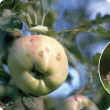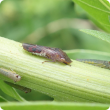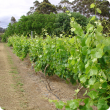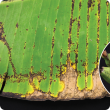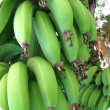Crops
The Department of Primary Industries and Regional Development continues to support the growth and international competitiveness of all crop industries in Western Australia.
With a 2400 kilometre span from its tropical north to its temperate south, WA supports a broad range of cropping industries from rain-fed winter cereals through to irrigated horticultural crops.
In the 2012/13 year the WA cropping industries exported a total of $3.9 billion which comprised: $3.1 billion of cereals, $859 million of pulses, pastures and oilseeds, $142 million of horticultural crops. The major contributors to these exports were wheat ($2.7 billion), canola ($756 million), barley ($377 million), lupins ($42 million), carrots at $48 million, oats ($12 million), and strawberries at $5.5 million.
Filter by search
Filter by topic
- (-) Remove Horticulture filter Horticulture
- Fruit (177) Apply Fruit filter
- Pests, weeds & diseases (164) Apply Pests, weeds & diseases filter
- Vegetables (137) Apply Vegetables filter
- Pests (86) Apply Pests filter
- Production & postharvest (85) Apply Production & postharvest filter
- Diseases (71) Apply Diseases filter
- Biosecurity & quarantine (68) Apply Biosecurity & quarantine filter
- Pest insects (67) Apply Pest insects filter
- Biosecurity (66) Apply Biosecurity filter
- Grapes & wine (64) Apply Grapes & wine filter
- Plant biosecurity (62) Apply Plant biosecurity filter
- Potatoes (52) Apply Potatoes filter
- Climate, land & water (49) Apply Climate, land & water filter
- Citrus (44) Apply Citrus filter
- Wine grapes (38) Apply Wine grapes filter
- Fungi (38) Apply Fungi filter
- Nursery & cutflowers (37) Apply Nursery & cutflowers filter
- Water (27) Apply Water filter
- Pome fruit (26) Apply Pome fruit filter
- Water management (26) Apply Water management filter
- Plant nutrition (21) Apply Plant nutrition filter
- Table grapes (21) Apply Table grapes filter
- New horticulture crops (21) Apply New horticulture crops filter
- Irrigation (21) Apply Irrigation filter
- Cabbage (20) Apply Cabbage filter
- Food, export & investment (19) Apply Food, export & investment filter
- Bananas (18) Apply Bananas filter
- Breeding & varieties (18) Apply Breeding & varieties filter
- Minor fruits (17) Apply Minor fruits filter
- Food & beverages (17) Apply Food & beverages filter
- Irrigated crops (17) Apply Irrigated crops filter
- Strawberries (16) Apply Strawberries filter
- Mangoes (16) Apply Mangoes filter
- Avocados (16) Apply Avocados filter
- Fertiliser (15) Apply Fertiliser filter
- Broccoli (15) Apply Broccoli filter
- Postharvest (14) Apply Postharvest filter
- Cauliflower (14) Apply Cauliflower filter
- Stone fruit (13) Apply Stone fruit filter
- Grains (12) Apply Grains filter
- Carrots (12) Apply Carrots filter
- Viruses & virus-like (11) Apply Viruses & virus-like filter
- Tomatoes (10) Apply Tomatoes filter
- Livestock & animals (10) Apply Livestock & animals filter
- Climate & weather (10) Apply Climate & weather filter
- Brussels sprouts (10) Apply Brussels sprouts filter
- Chinese cabbage (10) Apply Chinese cabbage filter
- Agribusiness Food & Trade (8) Apply Agribusiness Food & Trade filter






